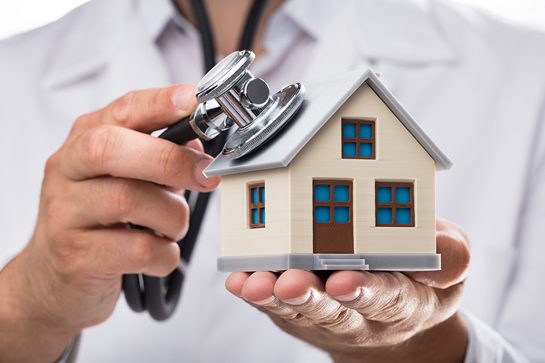Everyone knows that homelessness complicates efforts to treat an individual’s illnesses and injuries. Poor health puts individuals at risk for homelessness and homelessness puts individuals at risk for poor health, with many of them becoming super utilizers of healthcare services.
Homeless people are among the most frequent visitors to hospital emergency rooms nationwide. Because many shelters require occupants to leave during daytime hours, and open their doors on a first-come, first-served basis, homeless individuals have a disjointed schedule that leaves them poorly equipped to stay on top of their health. Enter the Housing First Initiative.
Housing First Initiative
States like New Jersey, Oregon, Texas, New York, California, and Louisiana have created Housing First programs that allow homeless people to move into a home before they receive healthcare and social services, rather than the traditional approach of delaying permanent housing while the homeless received healthcare services in a piecemeal fashion. These pilot programs have found that not having to worry about where to sleep makes it easier for individuals to stick to their medication schedules, keep appointments, and stay out of the emergency room. Imagine that. The combination of health care and Supportive Housing:
- Prevents onset of new illness and injury
- Improves access to high-quality, coordinated health/behavioral health care and other critical social services
- Promotes lifestyle behaviors that lead to good health
- Reduces costs for providers and local and state governments
Building Data Sharing and Evaluation Agreements from the Beginning
So how can your state get started? According to Chris DeMars, Director of Systems Innovation for the Transformation Center at Oregon Health Authority, “Partnerships are the key ingredient for improving the health of chronically homeless people and saving money for state and local governments. This involves building in data sharing and evaluation agreements from the beginning.” Here are 4 tips DeMars offers for states looking to create coordinated care programs:
- There’s a convergence of housing and healthcare because of their common goals. Work together.
- The real work is at the community level. The list of potential partnerships is wide and varied.
- Mental health centers are natural partners. Creatively craft ways to support more non-traditional health care providers
- State Medicaid Programs must figure out ways to support local efforts.
So get on the healthcare and supportive housing bandwagon. Follow the example of states who are already working to bring together health care and housing. You’ll soon see that it will improve population health, provide better care for individuals, and save you money. It’s a win-win for everyone.
For more information about how housing improves the health of homeless individuals, check out these great resources.
http://www.endhomelessness.org/pages/housing_first
http://mynewsla.com/government/2016/01/07/will-housing-first-approach-reduce-homelessness-in-la/



